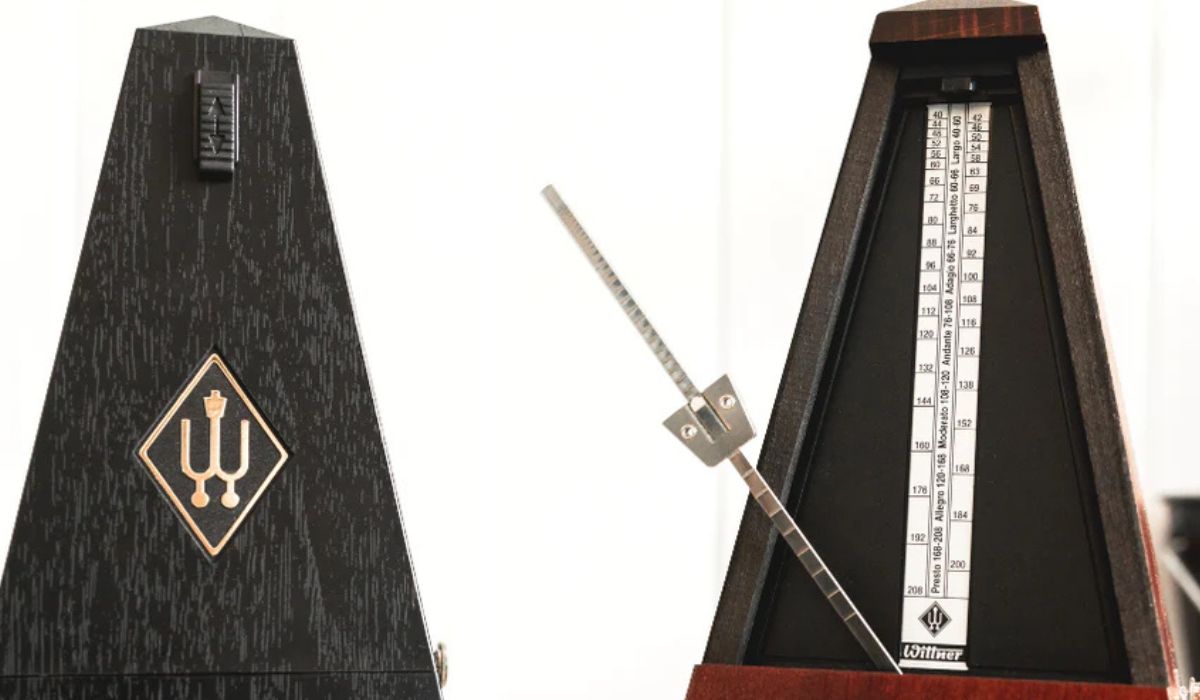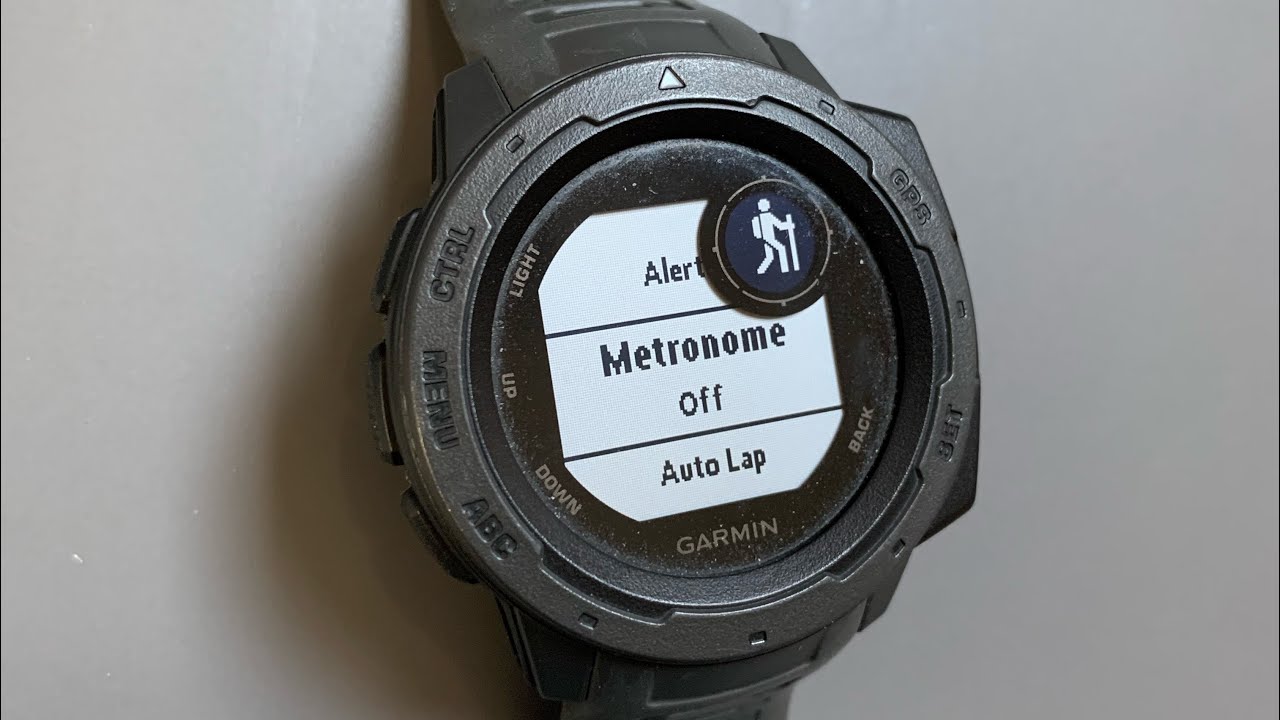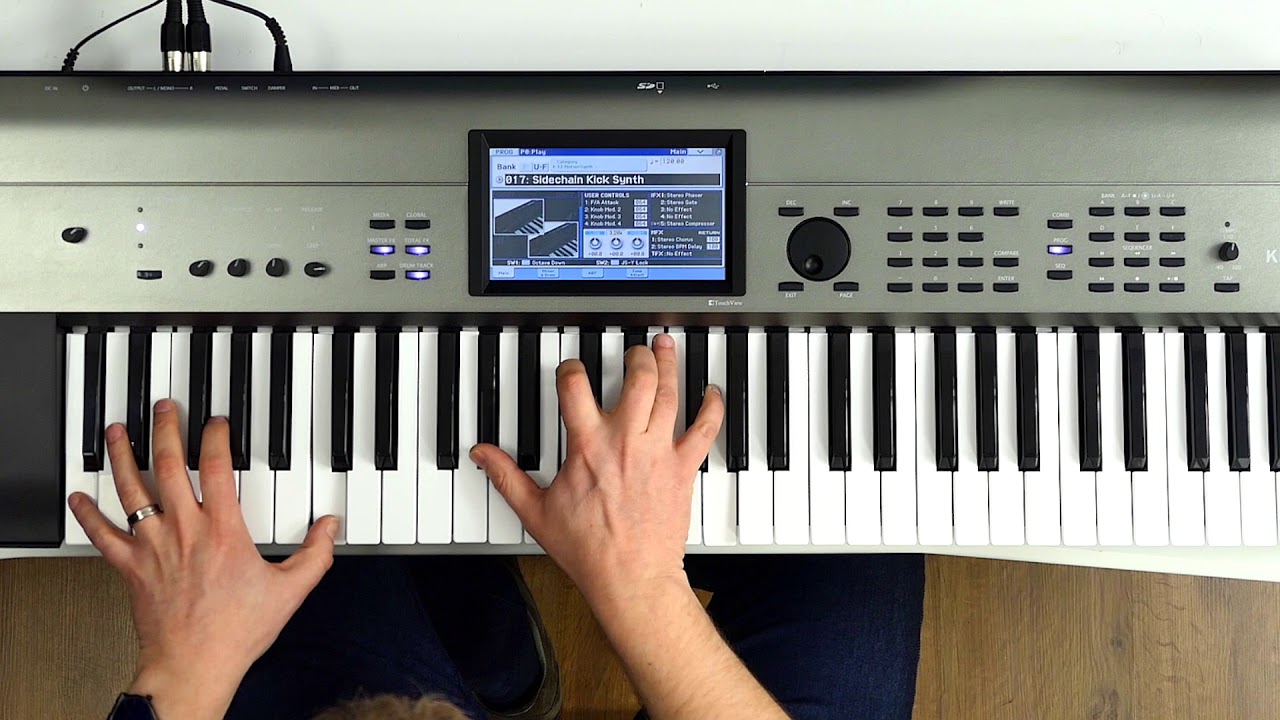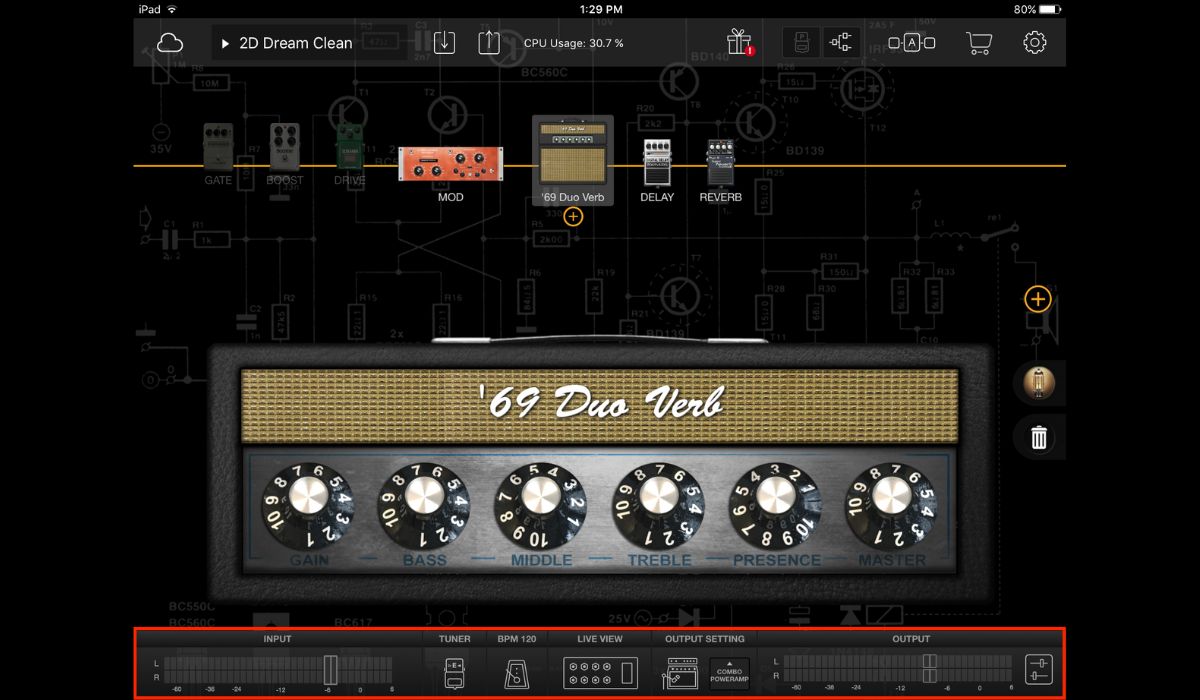Home>Production & Technology>Metronome>How To Practice Violin Using A Metronome
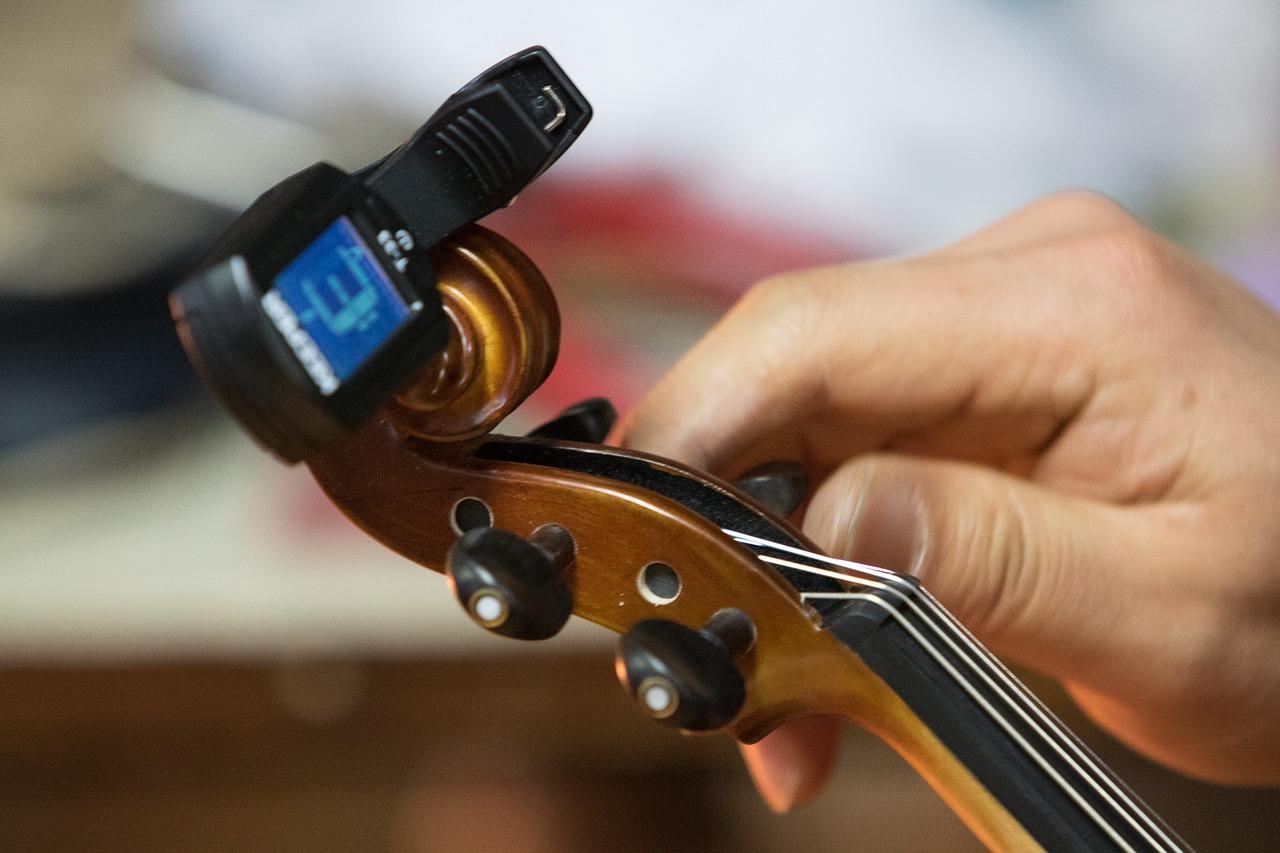

Metronome
How To Practice Violin Using A Metronome
Modified: January 22, 2024
Learn how to improve your violin playing with a metronome. Master rhythm and timing with this essential practice tool. Get started today!
(Many of the links in this article redirect to a specific reviewed product. Your purchase of these products through affiliate links helps to generate commission for AudioLover.com, at no extra cost. Learn more)
Table of Contents
- Introduction
- Why Use a Metronome for Violin Practice
- Getting Started with a Metronome
- Setting the Metronome Tempo
- Practicing Scales with a Metronome
- Using a Metronome for Rhythm and Timing Exercises
- Metronome Techniques for Improving Speed and Accuracy
- Incorporating the Metronome into Musical Pieces
- Advanced Metronome Techniques for Expression and Dynamics
- Tips for Effective Metronome Practice
- Conclusion
Introduction
Playing the violin is a beautiful and intricate art form that requires discipline, practice, and a keen sense of rhythm. Whether you’re a beginner or an advanced player, using a metronome during your practice sessions can be invaluable in developing precise timing, improving accuracy, and enhancing your overall musicality.
A metronome is a device that produces a steady beat at a specific tempo, helping musicians maintain a consistent tempo and rhythm. It acts as an essential tool for violinists to develop their sense of timing, sharpen their technique, and cultivate a deep understanding of musical phrasing.
In this article, we will explore the various benefits of using a metronome for violin practice and provide you with practical tips on how to integrate this tool effectively into your daily routine. Whether you’re working on scales, rhythm exercises, or learning complex musical pieces, a metronome can significantly enhance your playing and help you reach new levels of proficiency.
With the help of a metronome, you can train your body and mind to stay in sync with the beat, improving your internal sense of rhythm and developing a solid foundation for musical expression. So, let’s dive in and discover the incredible ways a metronome can elevate your violin playing!
Why Use a Metronome for Violin Practice
Using a metronome for violin practice offers numerous benefits that can greatly enhance your playing and musicianship. Here are some compelling reasons why incorporating a metronome into your practice routine is essential:
- Developing a Steady Sense of Timing: One of the most critical aspects of playing the violin is maintaining a consistent tempo. A metronome provides a precise beat, allowing you to develop a strong internal sense of rhythm and stay on track throughout your playing. With regular metronome practice, you’ll improve your ability to play in time and stay in sync with other musicians.
- Improving Accuracy and Precision: The metronome serves as a reliable guide, helping you play with accuracy and precision. It exposes any irregularities or inconsistencies in your timing, enabling you to identify and correct them. By practicing with a metronome, you’ll develop cleaner and more precise technique, resulting in smoother and more polished performances.
- Enhancing Musical Phrasing: The metronome allows you to experiment with different phrasing and interpretations of a musical piece. By varying the tempo and using the metronome as a reference, you can explore different musical nuances and create expressive and compelling performances.
- Building Endurance and Stamina: Playing the violin requires physical stamina and endurance, especially during fast and demanding passages. Practicing with a metronome can help you gradually increase your speed while maintaining control and accuracy. By gradually pushing the tempo and ensuring precise rhythm, you’ll build the necessary strength and endurance to tackle challenging pieces effectively.
- Developing a Consistent Practice Routine: The metronome provides a structured and consistent practice environment. By setting a specific tempo and dedicating time to practice with the metronome, you establish a disciplined routine and stay focused on your goals. This consistency allows for steady progress and improvement over time.
Overall, using a metronome for violin practice offers invaluable benefits that can transform your playing. It helps you develop timing precision, refine your technique, and cultivate musical expression. So, let’s dive deeper into the practicalities of using a metronome and explore how to incorporate it effectively into your violin practice sessions.
Getting Started with a Metronome
Using a metronome may seem intimidating at first, but with a little guidance, you’ll quickly become comfortable incorporating it into your violin practice. Here are some steps to get started:
- Choose the Right Metronome: There are various types of metronomes available, ranging from physical devices to mobile apps and online tools. Select one that suits your preferences and ensures clear and audible beats.
- Understand the Basic Functions: Familiarize yourself with the essential functions of your metronome, such as tempo adjustment, beat patterns, and volume control. Knowing how to navigate these features will make your practice more efficient.
- Set Up a Practice Space: Find a quiet and well-lit area free from distractions where you can comfortably practice with your metronome. Eliminating external disturbances will allow you to focus on the beat and concentrate on your playing.
- Start Slowly: Begin with a comfortable tempo that allows you to play the piece or exercise accurately. It’s important to establish a solid foundation before gradually increasing the speed. Starting too fast can lead to sloppy technique and mistakes.
- Choose Appropriate Exercises or Pieces: Select exercises or pieces that are suitable for metronome practice. Scales, arpeggios, and rhythm patterns are excellent choices as they help develop fundamental skills such as finger dexterity, bow control, and rhythm accuracy.
- Focus on the Beat: Pay close attention to the metronome beat and strive to align your playing with it. Listen carefully to the clicks or ticks and aim to synchronize your notes precisely with the beat. This will develop your sense of timing and improve your ability to stay in rhythm.
- Gradually Increase the Tempo: Once you feel comfortable playing a passage or exercise at a certain tempo, gradually increase the metronome speed. Challenge yourself to play accurately and fluently while maintaining control. Consistent practice and incremental increases will help you steadily improve your overall speed.
- Experiment with Different Tempos: Use the metronome to explore different tempos and rhythmic variations. Slow practice can help you refine your technique and focus on intricate details, while faster tempos can test your agility and accuracy.
- Take Breaks: It’s important to listen to your body and avoid excessive strain. Take short breaks during your practice sessions to rest and reset. This will help prevent fatigue and maintain your focus and concentration.
Remember, practicing with a metronome is a gradual process that requires patience and consistency. Embrace the journey and enjoy the progress you make as you develop a stronger sense of timing and refine your violin playing skills.
Setting the Metronome Tempo
Choosing the right tempo is crucial when using a metronome for violin practice. The tempo dictates the speed at which you’ll play a musical piece or exercise. Here are some tips for setting the metronome tempo:
- Start with a Comfortable Tempo: Begin by setting the metronome to a tempo that feels comfortable for you to play the passage or exercise accurately. This tempo should allow you to focus on technique and maintain a steady rhythm.
- Use a Metronome App or Online Tool: Many metronome apps and online tools offer a wide range of presets and adjustable tempos. Take advantage of these resources to find the ideal tempo for your practice.
- Consider the Musical Style: Different musical styles may have varying tempo requirements. Classical pieces may have specific indications, such as “Andante” or “Allegro,” which give you a general idea of the desired tempo. For other genres like jazz or pop, you can listen to recordings or refer to sheet music for tempo guidance.
- Gradually Increase the Tempo: As you become more comfortable with a particular passage or exercise, gradually increase the metronome tempo. Push yourself to play slightly faster while maintaining accuracy and control. This gradual increase will help improve your speed and stamina over time.
- Experiment with Different Tempos: Use the metronome to explore different tempos and rhythmic variations. Start by playing a piece at a slower tempo and gradually increase it. Alternatively, try playing at a faster tempo and then gradually slow it down. This experimentation will develop your adaptability and strengthen your sense of rhythm.
- Consider Musical Expression: While maintaining a steady beat is essential, it’s also crucial to consider the musical interpretation. Some phrases may require a slight rubato or tempo fluctuations. Experiment with different interpretations while still keeping the overall structure and rhythm intact.
- Consult a Teacher or Mentor: If you’re unsure about the appropriate tempo for a specific piece, consult with your violin teacher or a more experienced musician. They can provide guidance based on their knowledge and expertise.
- Listen to Recordings: Listening to professional recordings of the piece you’re practicing can give you a better understanding of the desired tempo. Pay attention to the rhythm and tempo of the performance and use it as a reference for your own practice.
Remember, the tempo you choose with the metronome should support your practice goals. It should allow you to work on accuracy, technique, and musical expression. With time and careful observation, you’ll develop a strong sense of tempo and be able to choose appropriate tempos for different musical pieces and exercises.
Practicing Scales with a Metronome
Scales are fundamental to violin technique, and practicing them with a metronome can greatly enhance your skills. Here’s how you can incorporate the metronome into your scale practice:
- Choose a Scale: Select a scale that you want to work on, such as major, minor, or chromatic scales. Start with scales that you are already familiar with or learning.
- Set the Metronome Tempo: Begin by setting the metronome to a comfortable tempo. It should be slow enough that you can play the scale accurately and confidently.
- Play with Precision: Play the scale slowly, focusing on precise finger placement, bowing technique, and intonation. Make sure to synchronize your notes with the metronome beat.
- Gradually Increase the Tempo: Once you’re comfortable playing the scale at the initial tempo, gradually increase the metronome speed. Challenge yourself to maintain accuracy and clarity while playing at a faster pace. This will improve your dexterity and finger coordination.
- Use Different Rhythmic Patterns: Experiment with various rhythmic patterns while playing the scale. You can try playing in triplets, dotted rhythms, or syncopated patterns. This will enhance your rhythmic abilities and add variety to your playing.
- Incorporate Dynamics: Practice playing the scale with different dynamics, such as playing softly (piano) and loudly (forte). This will help you develop control over volume and expression in your playing.
- Practice Ascending and Descending: Play the scale in both ascending and descending patterns. This will strengthen your muscle memory and coordination in both directions.
- Work on Shifting Positions: If you’re comfortable with a particular scale in first position, challenge yourself to play it in higher positions on the violin. This will expand your technical abilities and improve your intonation.
- Vary the Articulation: Experiment with different bowing techniques, such as staccato, legato, and spiccato, while practicing the scale. This will improve your bow control and articulation skills.
- Record and Analyze: Record yourself playing the scale with the metronome and listen back to identify areas for improvement. Pay attention to any inconsistencies in rhythm, intonation, or tone, and make adjustments accordingly.
Practicing scales with a metronome helps develop your technical proficiency, rhythmic accuracy, and finger coordination. It also trains your ears to internalize the beat and play in time. Remember to approach scale practice with focus, patience, and consistency, and you’ll witness significant progress in your overall violin playing.
Using a Metronome for Rhythm and Timing Exercises
Developing a strong sense of rhythm and timing is crucial for any violinist. Using a metronome for rhythm and timing exercises can greatly improve your precision and ability to stay in sync with other musicians. Here’s how you can utilize the metronome for these exercises:
- Start with Simple Rhythms: Begin by practicing with simple rhythmic patterns such as quarter notes or eighth notes. Set the metronome to a tempo that allows you to easily follow along and play each note accurately.
- Accentuate the Beat: Use the metronome to accentuate specific beats within a measure. For example, you can emphasize the first beat of each measure by playing it slightly louder. This exercise helps you internalize the pulse and reinforce your sense of meter.
- Subdivide the Beats: Set the metronome to a slower tempo and practice subdividing the beats, such as playing two or four notes per click. This exercise helps improve your ability to count and maintain rhythmic accuracy in complex passages.
- Syncopation Exercises: Explore syncopated rhythms by playing offbeat notes or accents. Set the metronome to a moderate tempo and experiment with syncopation in different musical contexts. This exercise enhances your ability to play with rhythmic complexity and adds an expressive quality to your playing.
- Polyrhythm Practice: Set the metronome to one tempo and practice playing a different rhythm simultaneously, creating a polyrhythmic effect. Start with simpler polyrhythms, such as playing three notes against a four-note metronome beat, and gradually increase the complexity as you become more comfortable.
- Musical Phrasing: Use the metronome to develop a strong sense of musical phrasing. Set it to the desired tempo and experiment with different interpretations and timing variations in your playing. This exercise enhances your ability to shape phrases and adds expressive nuances to your performance.
- Improvisation: Set a steady metronome beat and practice improvising over it. Start with simple melodies or scales and gradually introduce more advanced techniques. This exercise improves your ability to spontaneously create musical ideas while maintaining rhythmic precision.
- Complex Rhythmic Patterns: Challenge yourself with more complex rhythmic patterns, such as triplets, dotted rhythms, or irregular time signatures. Set the metronome to a slower tempo and work on playing these patterns accurately. As you become more comfortable, gradually increase the tempo.
- Accompaniment Practice: Set the metronome to simulate the tempo of an accompaniment you’ll be playing with, such as a piano or percussion. Practice your violin part while staying in sync with the metronome. This exercise enhances your ability to stay connected with the ensemble and improves your overall rhythmic cohesion.
- Gradually Remove Reliance on the Metronome: Over time, strive to rely less on the metronome and develop your internal sense of rhythm. Practice some exercises without the metronome, focusing on maintaining a steady and consistent tempo on your own.
Using a metronome for rhythm and timing exercises enables you to maintain a precise rhythmic foundation and play with confidence and accuracy. Remember to start with simple exercises and gradually progress to more complex rhythms. With consistent practice, you’ll witness significant improvement in your rhythmic abilities and overall musicality as a violinist.
Metronome Techniques for Improving Speed and Accuracy
When it comes to improving speed and accuracy on the violin, using a metronome can be a powerful tool. Here are some metronome techniques that can help you enhance your playing:
- Slow Practice: Start by setting the metronome to a comfortable tempo and practice the passage or exercise slowly and deliberately. Focus on playing each note accurately and precisely, paying attention to intonation, bowing technique, and finger placement. Slow practice allows you to develop muscle memory and control over each movement.
- Incremental Increases: Gradually increase the metronome tempo in small increments as you become comfortable and proficient at the current speed. This gradual increase challenges your technique and builds your speed over time without sacrificing accuracy. Aim for steady progress rather than trying to rush to your desired tempo.
- Practice in Sections: Break down complex passages into smaller sections and practice them with the metronome. Start with the slower sections and gradually work your way up to the faster sections. It helps to isolate challenging sections and build your speed and accuracy in a controlled manner.
- Use Subdivisions: Set the metronome to a faster tempo and practice subdividing the beats. For example, if the metronome beat is in quarter notes, practice playing eighth notes or sixteenth notes. This helps improve your accuracy and dexterity, as well as your ability to maintain a steady rhythm at higher speeds.
- Sprint and Recovery: Set the metronome to a tempo slightly faster than your comfort zone, and challenge yourself to play the passage or exercise as fast as possible. After a short sprint, return to a slower tempo to recover and regain precision. This technique helps improve your speed while maintaining control.
- Progressive Speed Drills: Set the metronome to a moderate tempo and play the passage or exercise; then, for the next repetition, increase the metronome speed by a few clicks. Gradually increase the tempo with each repetition until you reach your desired speed. This progressive approach helps develop speed incrementally and without sacrificing accuracy.
- Focus on Clear Articulation: Practice with the metronome to ensure each note is articulated clearly and evenly. Pay attention to the beginnings and ends of notes, ensuring they are distinct and well-defined. This technique improves precision, especially in fast and intricate passages.
- Divide Beats for Difficult Passages: If a passage contains rapid note sequences or challenging fingerings, divide the beats to make it more manageable. For example, if there are sixteenth notes in the passage, set the metronome to a slower tempo and play each sixteenth note as if it were an eighth note. This helps build muscle memory and accuracy.
- Record and Evaluate: Record yourself practicing with the metronome and listen back to identify areas for improvement. Pay attention to any rhythmic inconsistencies, technical challenges, or areas where speed compromises accuracy. Use these observations to refine your technique and adjust your practice approach.
- Play Along with Backing Tracks: Find backing tracks or accompaniment recordings that match the tempo and style of the passage or exercise you’re working on. Playing along with these recordings helps develop your sense of timing and rhythmic coordination while providing a musical context.
Remember, building speed and accuracy takes time and consistent practice. By incorporating these metronome techniques into your practice routine, you’ll gradually improve your technical abilities and develop greater control and precision in your playing on the violin.
Incorporating the Metronome into Musical Pieces
The metronome can be a valuable tool for improving your performance of musical pieces on the violin. Here are some techniques for effectively incorporating the metronome into your practice of musical pieces:
- Set the Tempo: Begin by setting the metronome to the desired tempo of the piece. Start with a slower tempo to ensure accuracy and gradually increase the speed as you become more comfortable.
- Play Along with the Metronome: Start by playing the piece along with the metronome as a guide. Focus on aligning your playing with the beat, aiming for precise rhythmic accuracy and coordination.
- Spot Practice: Identify sections of the piece that are particularly challenging or require more attention. Practice these sections with the metronome at a slower tempo, gradually working your way up to the performance tempo.
- Subdivide Complex Passages: For passages with intricate rhythms or complex note patterns, set the metronome to a slower tempo and practice subdividing the beats. Breaking down the passage into smaller rhythmic units can help improve your understanding and execution of the passage.
- Focus on Phrasing: Experiment with different phrasing and musical expressions while playing with the metronome. Use the metronome as a reference for maintaining a consistent tempo, but feel free to take subtle variations in timing and dynamics to enhance the musicality of the piece.
- Work on Transitions: Pay special attention to the transitions between different sections or technical passages in the piece. Use the metronome to ensure smooth and seamless transitions, practicing the specific shifts and tempo changes that may be required.
- Gradually Remove Reliance on the Metronome: As you gain more confidence and familiarity with the piece, gradually decrease the reliance on the metronome. Practice playing without the metronome while maintaining a steady tempo and rhythm.
- Record and Evaluate: Use the metronome to record your performance of the piece and listen back to identify areas for improvement. Pay attention to any rhythmic inconsistencies, timing issues, or sections where your performance deviates from the desired tempo. Make adjustments and refine your playing based on these observations.
- Practice with Accompaniment: Find recordings or play along with accompaniment tracks that complement the musical piece. This can help you develop a sense of ensemble playing and improve your ability to stay in time with other musicians.
- Perform with Confidence: Once you have practiced the piece with the metronome extensively, gradually reduce your reliance on it and focus on performing the piece with confidence and musicality. Trust in the rhythmic foundation you have developed through metronome practice while allowing your interpretation and expression to shine.
By incorporating the metronome into your practice of musical pieces, you can develop a strong sense of timing, accuracy, and rhythmic precision. Remember to use the metronome as a guide while incorporating your own musical expressions and interpretations, finding the perfect balance between precision and artistic expression.
Advanced Metronome Techniques for Expression and Dynamics
While the metronome is often associated with maintaining a steady tempo, it can also be used as a tool for developing expression and dynamics in your violin playing. Here are some advanced metronome techniques to enhance your musicality:
- Tempo Rubato: Experiment with tempo rubato, a technique that involves slight tempo variations to add expressiveness to a musical phrase. Using the metronome as a reference, intentionally slow down or speed up certain notes or phrases, giving them a more personal and nuanced interpretation.
- Dynamic Contrasts: Set the metronome to a moderate tempo and practice playing a musical piece with varying dynamics. Use the metronome’s beat as a guide to maintain a consistent pulse while exploring the full range of dynamics, from pianissimo to fortissimo and everything in between.
- Crescendos and Decrescendos: Use the metronome to practice crescendos (gradually increasing volume) and decrescendos (gradually decreasing volume) within a musical phrase. Set the metronome tempo to a comfortable speed and practice gradually changing the volume of your playing while staying in sync with the beat.
- Articulation Variations: Experiment with different articulation techniques, such as playing legato (smooth and connected) or staccato (short and detached), while following the beat of the metronome. Explore how different articulations can affect the overall expression and character of a musical passage.
- Metric Modulation: Practice metric modulation with the metronome to transition smoothly between different tempos or time signatures within a piece. Start by setting the metronome to the current tempo, then gradually increase or decrease the tempo to shift to the desired new tempo. This technique adds excitement and variation to your performance.
- Syncopation Exercises: Use the metronome to practice syncopated rhythms, where the accents fall on the weaker beats or offbeats of the measure. Set the metronome to a moderate tempo and practice playing these syncopated rhythms accurately while maintaining a steady pulse.
- Accelerando and Ritardando: Practice accelerating (increasing tempo) or ritardando (slowing down) with the metronome to smoothly transition between different sections of a piece. Use the metronome as a guide to maintain a consistent tempo while gradually speeding up or slowing down your playing.
- Expressive Phrasing: Set the metronome to a slow tempo and practice emphasizing certain notes or phrases within a musical piece, adding personal expression. This technique helps you focus on shaping and highlighting important musical moments.
- Musical Interpretation: Use the metronome as a reference while experimenting with different interpretations and expressive nuances in your playing. Set the metronome to the desired tempo and play the piece, making conscious choices to vary the timing, dynamics, and phrasing to add your own artistic signature.
- Musicality in Tempo Changes: For pieces that have frequent tempo changes, practice with the metronome to ensure smooth transitions between different tempos. Pay close attention to maintaining a steady pulse and adjusting your playing as the tempo shifts, maintaining a sense of continuity.
By incorporating these advanced metronome techniques into your practice, you can bring a new level of expression and dynamics to your violin playing. Remember to use the metronome as a tool for guidance while allowing your own musical interpretation and creativity to shine through.
Tips for Effective Metronome Practice
To make the most out of your metronome practice sessions, consider the following tips:
- Start Slow: Begin your practice at a tempo where you can comfortably play with accuracy and precision. Gradually increase the tempo as you build confidence and proficiency.
- Focus on Subdivisions: Pay attention to subdivisions of the beat to improve rhythmic accuracy. Practice playing various rhythms, such as triplets or dotted rhythms, to develop a solid sense of timing.
- Use Different Beat Patterns: Experiment with different beat patterns provided by your metronome or app. This can help you internalize different time signatures and develop a strong sense of pulse.
- Record and Evaluate: Take advantage of recording technology to listen back to your practice sessions. This allows you to identify areas for improvement, such as inconsistencies in rhythm or tempo.
- Practice in Small Sections: Break down challenging passages into smaller sections. Practice each section with the metronome, gradually increasing the tempo as you gain proficiency.
- Experiment with Expressive Timing: While the metronome promotes precise timing, don’t be afraid to experiment with slight variations for expressive purposes. Use the metronome as a reference while adding subtle rubato or expressive nuances to your performance.
- Improve Speed Gradually: Building speed takes time and patience. Gradually increase the tempo, focusing on accuracy and control. Resist the temptation to rush to rapid tempos without maintaining precision.
- Practice with Accompaniment: Play along with recordings or backing tracks to practice playing in ensemble settings. This helps improve your ability to stay in sync and enhances your sense of musicality.
- Combine Metronome Practice with Free Practice: While the metronome is a valuable tool, balance your practice by incorporating sessions without the metronome. This allows for more flexible and expressive playing, helping to develop a well-rounded musicality.
- Practice Mindfully: Stay fully engaged during metronome practice sessions. Focus on technique, tone, and musicality, aiming for a well-rounded improvement in your playing.
- Set Realistic Goals: Set achievable goals during metronome practice sessions. This could involve increasing tempo by a certain percentage or improving accuracy in specific passages. Celebrate your progress and maintain a positive mindset.
- Stay Consistent: Regular practice is key. Dedicate consistent time slots for metronome practice to develop consistent timing and rhythm skills.
Remember, the metronome is a versatile tool that can greatly enhance your violin playing. With mindful practice and a focus on accuracy, rhythm, and musical expression, you’ll soon witness significant growth in your techniques and musicality. Embrace the metronome as a guide and a partner on your journey towards becoming a more proficient and accomplished violinist.
Conclusion
Incorporating a metronome into your violin practice can have a transformative impact on your playing. The consistent beat provided by the metronome helps develop a strong sense of timing, improve accuracy, and refine your technique. From practicing scales and rhythm exercises to incorporating it into musical pieces, the metronome serves as a valuable tool for every violinist at any skill level.
Through the use of advanced metronome techniques, you can enhance your expression and dynamics, adding depth and musicality to your performances. By setting realistic goals, practicing mindfully, and utilizing the metronome in conjunction with other practice methods, you can see steady progress in your speed, accuracy, and overall musicianship.
Remember, metronome practice is a gradual process that requires patience, consistency, and an open mindset. It is important to strike a balance between adhering to the metronome’s guidance and adding personal interpretation and expression to your playing.
As you continue to incorporate the metronome into your practice routine, be sure to pay attention to small details, such as subdivisions, accentuations, phrasing, and dynamics. Embrace recording technology to evaluate your progress objectively and make necessary adjustments along the way.
By following the tips provided and utilizing the metronome effectively, you will experience significant improvements in your timing, precision, speed, and overall musical performance. Embrace the metronome as a valuable practice companion, and watch your violin playing reach new heights!





